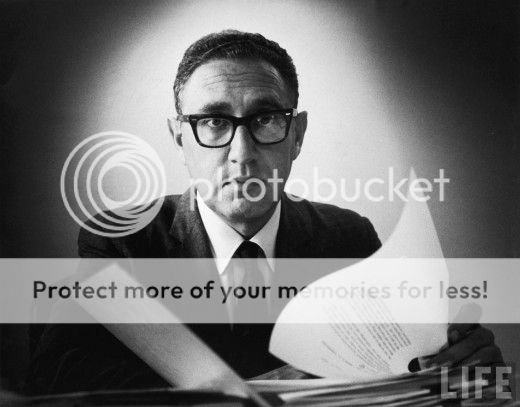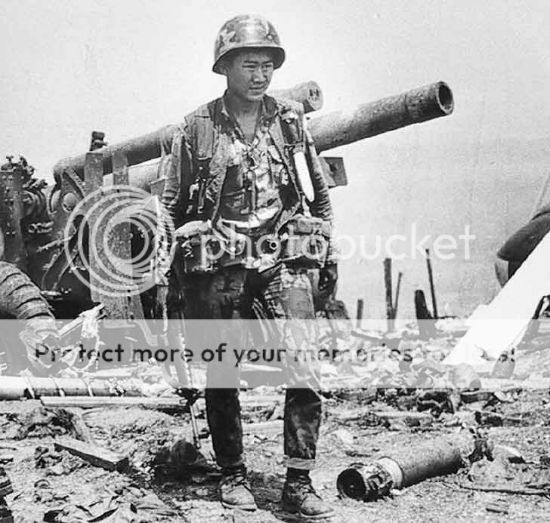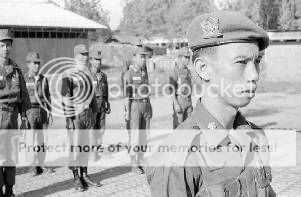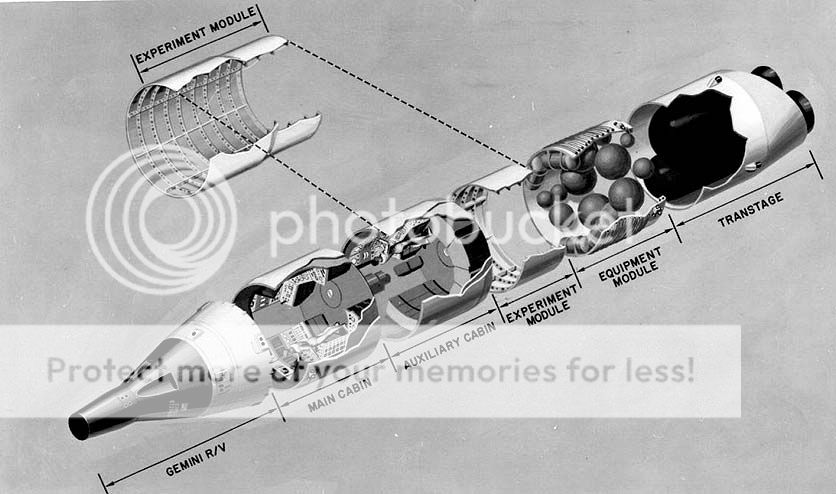Progression in the Era of Progress
On August 1st 1961, President Nixon spoke of an “Era of Progress” and set the goal of placing a man on the moon by the end of the decade; but, the speech did much more than that. It provided the summation of what the Nixon Administration’s domestic agenda sought to achieve. The Era of Progress promised that if the agenda proved successful it would go down in history as a period of peak American success and dominance. What was worrying even the most ardent Nixon supporter was that the Era of Progress had until 1963 crept forward only a few inches. That would soon change.
Nixon now proceeded headlong into the second half of his first term. The progress wanted in the realms of Civil Rights and the reduction of organized crime was further behind than anyone would have preferred. In the areas of space, the Soviets had caught up to and surpassed NASA’s achievements. Alan Shepard’s flight had rocketed morale by slipping the grasp of Earth and sending the first man into space (to any public knowledge) and John Glenn’s orbital flight had put America back on level ground at the time. Now, despite NASA’s best efforts, America was again behind in the race. Gordon Cooper’s Mercury flight in Faith 7 on January 31st had been completely overshadowed by the fallout of the Turkish Missile Crisis and had fallen entirely short of overtaking the Soviet record for longest flight duration. Vostok 4 in September 1962 had set the current duration record of 3 days, 3 hours and 17 minutes; additionally, its concurrent flight with Vostok 5 marked the first ship to ship communication and simultaneous flight of two spacecraft. NASA’s shortcoming in this category of achievement fell upon both the Mercury capsule and the hesitance toward unnecessary risks had by the heads of NASA.
Forged partially from pressure applied from the top, NASA’s Project Gemini was designed to not only again catch-up to the Soviets but to surpass them beyond any stretch of the imagination. Gemini (as it would come to be called) had been in the planning stages since 1961 as a successor to the Mercury Program and the project as a whole would drive America toward and onto the moon. Since its reveal to the public in March of 1962, it had progressed in the shadow of the media focus on the Mercury Program and now with its conclusion, Gemini would be brought to the forefront. The program would be a decade long endeavor that would take the Gemini capsule into several different variations and purposes. It would serve to perform a spacewalk, rendezvous, lunar flyby and eventually it would land on the surface of the moon. However, no Gemini flights would be ready to leave the ground until January of 1964 and a moon mission was out of the question until at least late 1967 at the most liberal calculation. The best news until then would be the early completion of the National Air and Space Center that incorporated Langley Research Center in Hampton, Virginia. This was a boon for the space program in not only providing new facilities but also producing the air of progress to the media and the public that now had evidence that the President had in fact been serious about landing on the moon within the decade. Its completion added with the Launch Operations Center in Cape Canaveral created a new and effective system that the Gemini Program would utilize.
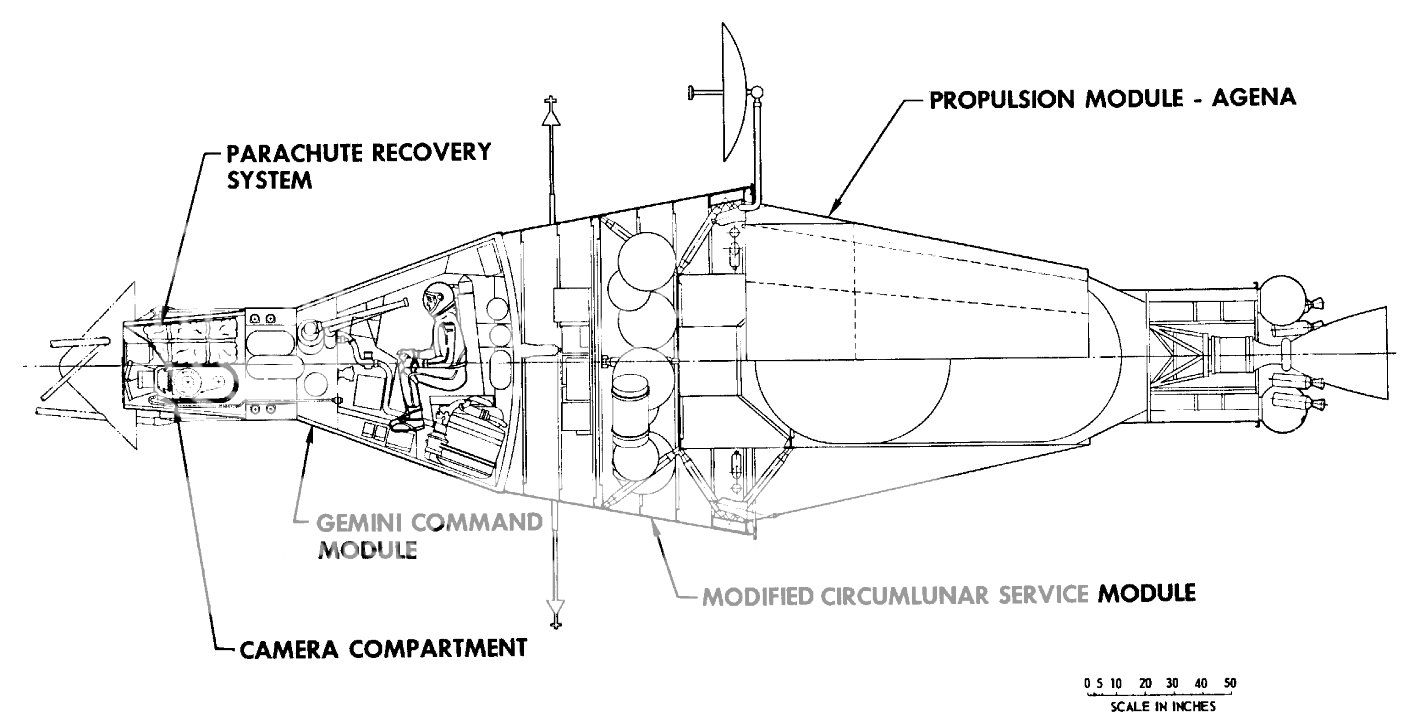
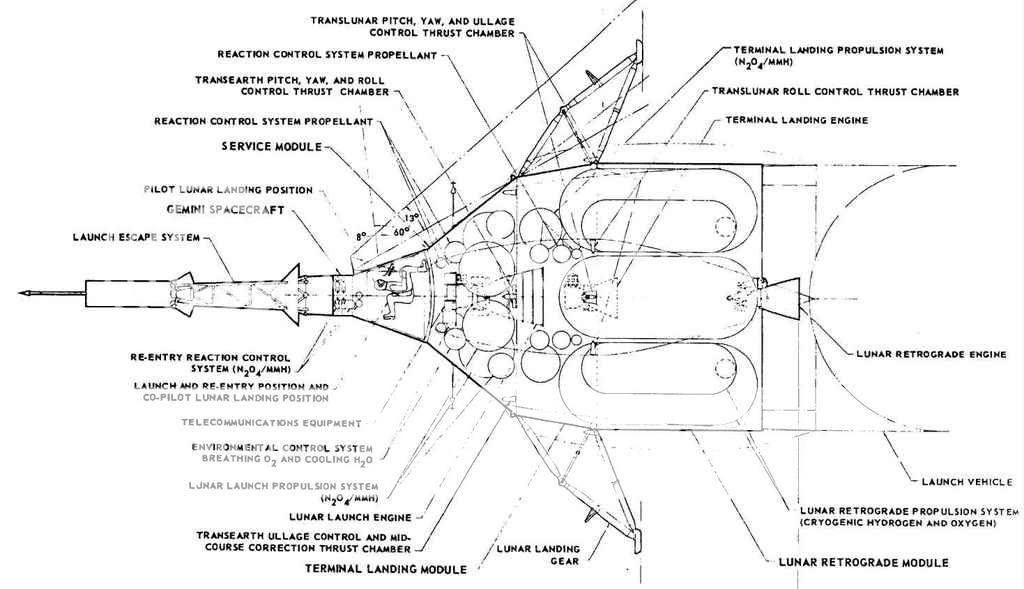
(TOP) - Schematics showing a preliminary design for the Gemini Capsule to perform a lunar flyby.
(BOTTOM) - Schematics showing one of the most likely candidates for lunar lander variant of the Gemini capsule. This lander would perform a direct descent onto the lunar surface before returning to Earth. It would be a two manned mission.
Along with the flight and planned moon missions of the Gemini Program, NASA unveiled in a televised press conference on March 19th 1963 that the Gemini Program would be placing at least one Manned Orbiting Laboratory or MOL into orbit. The MOL would be primarily designed as a cylindrical body attached to a modified Gemini capsule that would orbit the Earth for a roughly 40-day period in order to conduct scientific experiments and measure the effects of prolonged exposure to zero gravity. Unannounced and classified were the additional plans to launch additional MOL’s as military operations focused on observation and reconnaissance missions. According to the March Press Conference, the MOL could be operational by as early as 1967. It would be the first of several planned extracurricular projects related to the Gemini Program that would crop up over the next few years.
Illustration of how the Manned Orbiting Laboratory variant of the Gemini Capsule would appear.
.....................................
Shifting focus to the United States Navy, a program would begin in April 1963 that flipped gazes in the opposite direction from that of space to an equally unexplored and exotic direction. Designated as SEA-LAB, the experimental operation would construct a temporary underwater habitat on the ocean floor to study the effectiveness of saturation diving and the effects of isolation on human beings. If successful, the idea of including a future permanent iteration of SEA-LAB to aid in the preparation and training of astronauts was put on the table. For now, it would fall onto divers now labeled as aquanauts to take part in the experimental habitat.
SEA-LAB I was created by converting two floats into the main body and used railroad axles to hold it securely in place. The Navy chose an area off of the northern coast of Cuba and placed the structure at a depth of 60 m under the surface. For 3 weeks SEA-LAB conducted experiments under the command of George Bond and made several breakthroughs in the study of the longevity and practicality of saturation diving as well as making observations dealing with the habitat itself that would prove worthwhile for future projects. While not as exciting as their counterparts flying into space, aquanauts were exploring an entire other universe much closer than the stars and one somehow as mysterious as it was dangerous.
One unintended consequence of SEA-LAB was the spark of public popularity in a new field of science. With news programs now out of stories on the Cuban war and with little progress to report on the Space Race, SEA-LAB filled American airwaves for the three weeks it was underway. The exposure resulted in what has sometimes been likened to a “Cadet Boom” a term that would become common in the 1960’s. A “Cadet Boom” was coined to describe a burst in public interest of a program or pop culture movement experience especially among the youth. Just as the Mercury Program had resulted in the “Space Cadet Boom” the experiments of SEA-LAB would create a “Sea Cadet Boom”. Children cleared space next to their model spaceships and action figures for scuba divers, underwater vehicles, and sea monsters. In the Gulf of Mexico and along the coastlines of the United States there was a surprising and noticeable rise in diving as a hobby for that summer. While the Sea Cadet Boom of 1963 would be highly diminished after that summer, public popularity and the mission’s success were more than enough to ensure there would be a SEA-LAB 2.
.......................................
Outside of exploration, the Era of Progress would also begin to have a noticeable effect on the United States Military armament. The experimentation of the new AR-15 rifle deployed to South Vietnamese forces had far exceeded expectations for those monitoring the test shipment. The idea of using an allied force to do American weapons testing was a relatively new one and it had been an intelligent decision. The data collected allowed for multiple shortcomings in the design to be corrected and examined before a broad American adoption of the firearm took place. The US Air Force had been granted 80,000 of the new rifles at the same time as Vietnam, but unlike the Vietnamese few if any of the Air Force rifles saw action in combat. The abilities demonstrated by the AR-15 rifle in Vietnam had been enough for Secretary of Defense Nitze to be convinced that it was the new rifle for the new age of combat. In late April of 1963, Nitze ordered the immediate halt of production of the M-14 rifle and began production and rollout of the AR-15. Criticism and condemnation within the Army fell upon deaf ears and it became clear that the rifle would be there to stay.
The Nixon policies toward the military also allowed for the dedication of funds for experimental new aircraft and vehicles that could be adopted upon their success. One of the most memorable of these aircraft from this period of time was the LTV XC-142. A tiltwing design aircraft that was intended to have vertical/short takeoff and landing capabilities. The aircraft would primarily be intended for cargo and troop transportation capabilities, but there was early mention that the President of the United States may find use of such an aircraft as a new Marine 1. Any continuation of this thought was quickly put aside until at least the design was proven to be reliable and efficient. Like many designs of the day, it would take until the second half of the 1950’s before some of these experimental aircraft began the process of adoption into service.
